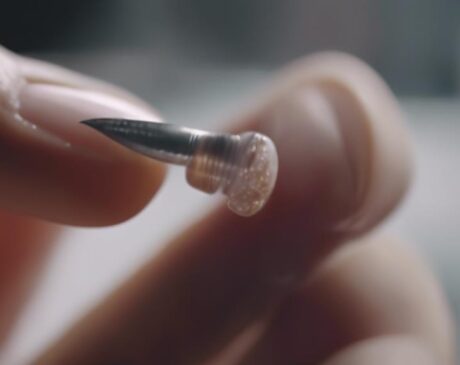How Long Should You Cure Nails Under UV Light?
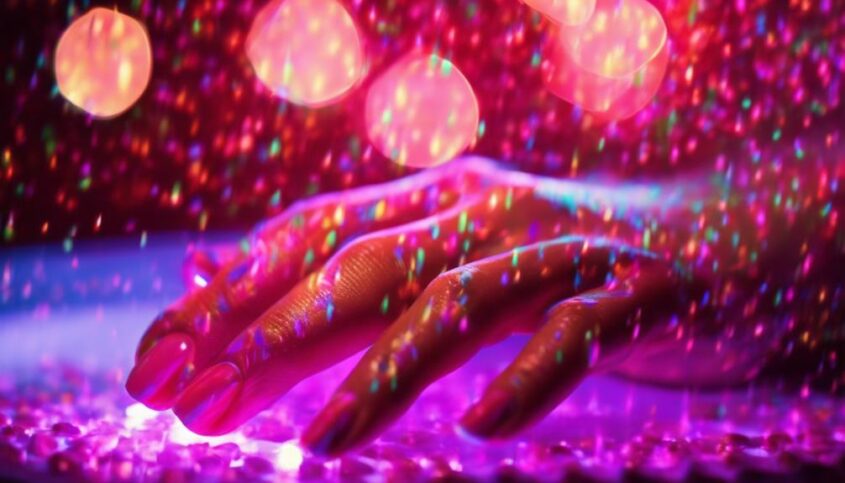
For optimal results, cure thin layers of nail polish under UV light for 30-60 seconds. Thicker layers may require 60-120 seconds for complete curing. Consider UV lamp wattage and gel polish brand guidelines. Higher UV intensity leads to faster curing. Balancing curing time prevents damage or chipping. Achieve flawless results by following manufacturer guidelines and applying thin, even layers. Attention to detail is key. Proper preparation and avoiding overcrowding the UV lamp ensure even exposure. Remember, precision in timing is crucial for durable enhancements. Mastering these steps leads to long-lasting, salon-quality nails.
Key Takeaways
- Optimal cure times range from 30-120 seconds based on layer thickness.
- Consider UV lamp wattage and quality for efficient curing.
- Balance curing time to prevent overcuring or undercuring.
- Follow manufacturer guidelines for best results and durability.
- Ensure proper nail preparation and adhere to recommended curing techniques.
Factors Affecting Cure Times
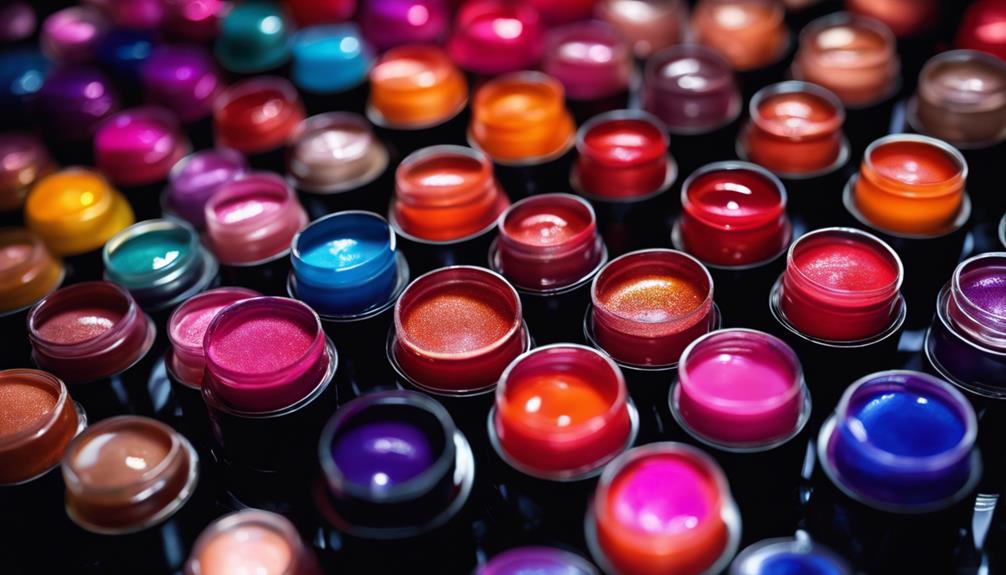
How do various factors influence the curing times of nails under UV light? The curing process of nails under UV light is a delicate balance influenced by multiple factors. One crucial element is the thickness of the nail polish layer applied. Thicker layers require longer curing times to ensure complete drying and hardening. Additionally, the type and quality of the UV lamp used play a significant role in determining cure times. High-quality, professional-grade lamps with the appropriate wattage and UV spectrum can accelerate the curing process compared to lower-quality alternatives.
Moreover, the brand and formulation of the gel polish used can impact curing times. Some formulations are designed to cure faster under specific UV wavelengths, providing quicker results. Environmental factors such as temperature and humidity can also affect cure times, with warmer and drier conditions generally leading to faster curing. Understanding and optimizing these various factors can help nail technicians achieve efficient and effective curing results for their clients, ultimately leading to a superior nail finish.
Recommended Cure Times for Thin Layers
When considering recommended cure times for thin layers of nail polish under UV light, it is crucial to focus on optimal curing times to ensure the durability of the manicure. Understanding the effects of undercuring, where the polish may not fully harden, is essential to prevent premature chipping. Moreover, preventing overexposure is key to avoiding potential risks associated with prolonged UV light exposure during the curing process.
Optimal Curing Times
To achieve optimal results when curing thin layers of nail polish under UV light, adhering to recommended cure times is essential for ensuring a durable and long-lasting finish. For thin layers of polish, typically around 30-60 seconds of UV exposure is recommended. However, advancements in UV technology have led to the development of lamps with higher wattage, allowing for quicker curing times. Some newer UV lamps can cure thin layers of nail polish in as little as 10-20 seconds. These innovations not only save time but also reduce the risk of overcuring, ensuring the nail polish is fully cured while maintaining its integrity. Keeping abreast of technological advancements in UV curing can help nail technicians achieve efficiency and impeccable results.
Effects of Undercuring
Building upon the significance of adhering to recommended cure times for thin layers of nail polish under UV light, understanding the effects of undercuring is imperative in ensuring a flawless and enduring finish. When nail polish is undercured, it can lead to several undesirable outcomes such as a tacky or soft finish, increased susceptibility to chipping or peeling, and a lack of vibrancy in the color. Additionally, undercuring may result in poor adhesion of the polish to the nail, leading to premature wear and a shorter lifespan of the manicure. To avoid these issues, it is essential to follow the manufacturer's guidelines for curing times, especially when applying multiple thin layers, to achieve optimal results and long-lasting wear.
Preventing Overexposure
Adhering to the recommended cure times for thin layers of nail polish under UV light is essential to prevent overexposure and ensure a flawless and enduring finish. To help you stay on top of these recommendations, here is a table outlining the suggested cure times for different types of nail polish layers:
| Nail Polish Layer | Recommended Cure Time |
|---|---|
| Base Coat | 30 seconds |
| Color Coat | 60 seconds |
| Top Coat | 90 seconds |
Recommended Cure Times for Thick Layers
For optimal results when curing thick layers of gel polish, it is essential to adhere strictly to the recommended cure times. Applying thick layers of gel polish can pose challenges during the curing process, as insufficient curing time can result in under-cured layers that are prone to chipping and peeling. To ensure a durable and long-lasting manicure, it is recommended to follow the guidelines provided by the gel polish manufacturer for curing times.
Thick layers of gel polish require longer cure times compared to thin layers to ensure that the UV light penetrates through the entire layer and cures it evenly. Typically, curing thick layers may range from 60 to 120 seconds per coat, depending on the brand and formulation of the gel polish. It is crucial to avoid rushing the curing process, as this can compromise the integrity of the manicure.
Understanding UV Lamp Strength
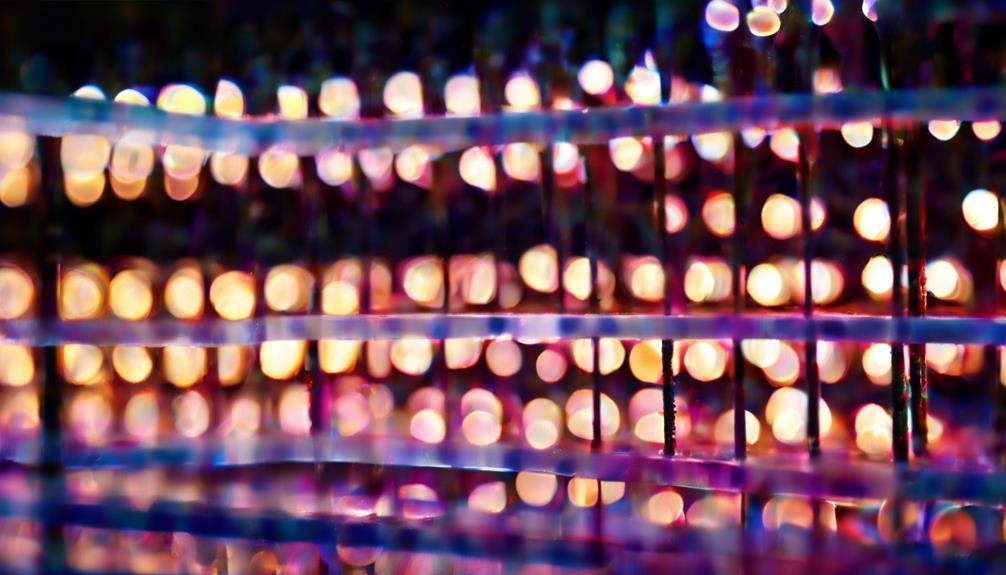
Understanding the strength of UV lamps is crucial in achieving optimal curing results for nail enhancements. The intensity of the UV light directly impacts the curing time needed for different types of nail products. Variations in curing times can occur depending on the wattage and quality of the UV lamp being used.
UV Light Intensity
Achieving optimal results when curing nails under UV light heavily relies on comprehending the strength and intensity of the UV lamp used. UV light intensity is a critical factor in the curing process. Higher UV intensity can lead to faster and more efficient curing, while lower intensity may require longer curing times. It is essential to consider the wattage and quality of the UV lamp to ensure the right intensity for the specific nail products being used. Innovations in UV lamp technology have led to the development of lamps with varying intensities, offering nail technicians more control and precision in the curing process. Understanding UV light intensity enables professionals to achieve flawless and long-lasting nail enhancements.
Curing Time Variations
In the realm of nail curing under UV light, a crucial aspect to grasp is the correlation between curing time variations and the strength of the UV lamp utilized. UV lamp strength directly impacts curing time, with higher wattage lamps typically requiring shorter curing times. For instance, a 36-watt lamp might cure gel nails in 2 minutes, whereas a 48-watt lamp could achieve the same results in just 30 seconds. Understanding the power output of your UV lamp is essential for efficient and effective curing. By selecting a lamp with the appropriate strength for the products being used, users can streamline their nail curing process, save time, and ensure optimal results. Remember, matching UV lamp strength to curing time variations is key to achieving flawless nails.
Overcuring Vs. Undercuring
When curing nails under UV light, it is crucial to distinguish between overcuring and undercuring to ensure optimal results in nail treatment. Overcuring happens when nails are exposed to UV light for a duration longer than necessary, leading to potential damage such as brittleness, discoloration, or weakening of the nail plate. On the other hand, undercuring occurs when nails are not exposed to UV light for a sufficient amount of time, resulting in a lack of proper polymerization and ultimately leading to premature chipping, peeling, or dullness of the nail polish.
Balancing the curing time is essential to achieve durable and long-lasting nail enhancements. Overcuring can be detrimental to the health and appearance of the nails, while undercuring compromises the integrity of the manicure. By understanding the differences between overcuring and undercuring, nail technicians can deliver high-quality nail services that meet the expectations of clients seeking innovation and excellence in nail care.
Tips for Achieving Perfect Curing
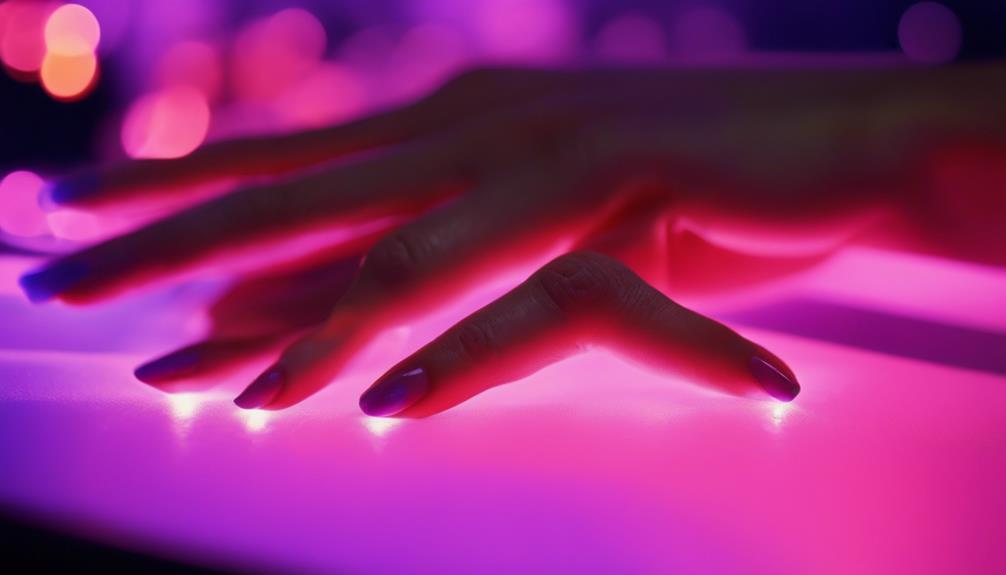
To ensure optimal nail curing results under UV light, precision in timing and technique is paramount. Achieving perfect curing requires attention to detail and adherence to best practices. Here are four innovative tips to help you achieve flawless results:
- Proper Preparation: Ensure nails are clean, dry, and properly primed before beginning the curing process. This step is crucial for the gel to adhere correctly and prevent lifting or peeling.
- Thin, Even Layers: Apply gel polish in thin, even layers to promote uniform curing. Thick layers can result in under-curing, leading to a tacky finish that is difficult to remove.
- Avoid Overcrowding: To ensure each nail receives adequate UV exposure, avoid overcrowding the UV lamp. Cure fewer nails at a time or use a lamp with strategically placed bulbs for even curing.
- Follow Manufacturer Guidelines: Different gel polish brands may have specific curing requirements. Always refer to the manufacturer's guidelines for optimal curing times and techniques. Adhering to these recommendations will help you achieve long-lasting, salon-quality results.
Frequently Asked Questions
Can Curing Nails Under UV Light Increase the Risk of Skin Cancer?
Curing nails under UV light may pose a risk of skin cancer due to prolonged exposure. UV rays can damage skin cells, potentially leading to cancer. It's crucial to limit exposure, use protective measures, and consult professionals for safe practices.
Are There Any Negative Side Effects of Curing Nails Under UV Light?
While UV light is effective for curing nails, potential negative side effects include skin damage and increased risk of skin cancer. It is essential to balance the benefits of nail curing with proper precautions to minimize any adverse outcomes.
Is It Safe to Use UV Lamps for Curing Nails at Home?
Like a skilled artist wielding a brush, using UV lamps for at-home nail curing can be safe if done correctly. Understanding proper usage, maintaining distance, and limiting exposure can ensure a convenient and effective experience.
Can UV Light Cause Damage to the Natural Nail Bed?
UV light has the potential to cause damage to the natural nail bed due to prolonged exposure. It is essential to follow safe practices and limit UV exposure to protect the health and integrity of the nails.
Are There Any Alternative Methods for Curing Nails Without Using UV Light?
Alternative methods for curing nails without UV light include LED lamps, which are faster and safer. Dual-cure products that can air dry or cure under LED light are also available. These options provide efficient and innovative nail curing solutions.

